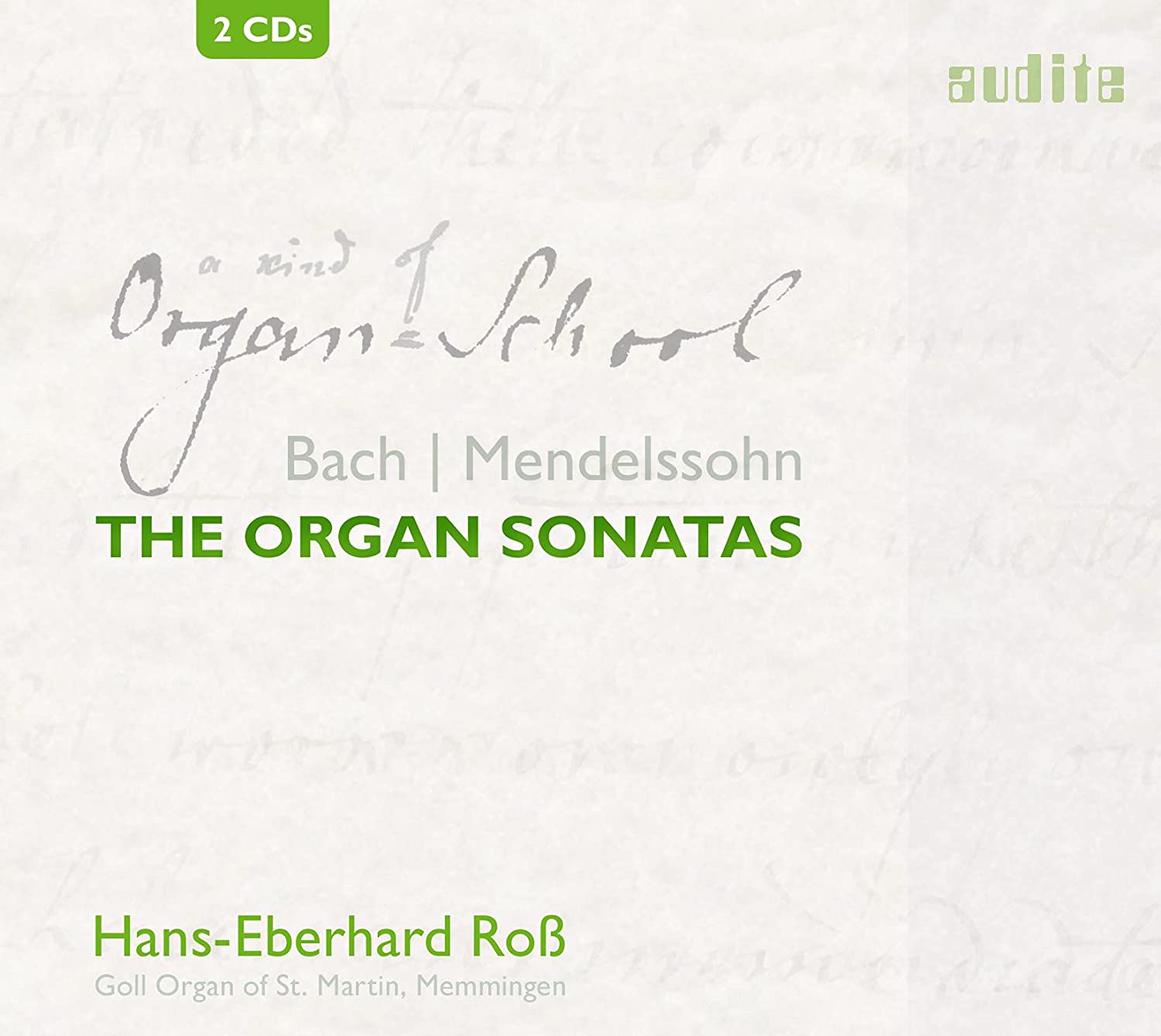Hans-Eberhard Roß (Goll Organ of St Martin, Memmingen)
141:27 (2 CDs in a card triptych)
audite 23.447
Click HERE to buy this on amazon.co.uk
[These sponsored links help the site remain alive and FREE!]
Teaching online has become a new art form, and the experienced teacher Hans-Eberhard Roß has hit on the idea of pairing the six Bach Trio Sonatas (BWV 525-530) with the six Mendelssohn Sonatas as a ‘kind of organ school’, interlacing Bach with Mendelssohn sonata by sonata and using the Goll organ in St Martin, Memmingen in June 2020 to demonstrate them.
The Goll organ was built in 1998 and the website www.audite.de gives some of Roß’ further notes on each movement of the Mendelssohn; only the basic specification of this four-manual organ is given in the liner notes. The organ feels as though it was conceived for the 19th-century French symphonic tradition, but Roß assures us that it is equally good for Mendelssohn and Bach.
He uses plenty of upperwork in the outer movements of the Bach sonatas and the generous acoustic in which the organ speaks does not detract from the clarity of his playing. Solo reeds are used to contrast with the flutes in the slow movements and, a chorus reed is even used for the LH of the Allegro in Sonata 2 in C minor, where, after an exceptionally well-registered and eloquent Largo, the 8’ pedal booms unpleasantly. In the Mendelssohn sonatas, it is the overall sound of the fortes that I find the organ lets him down. Here his brisk tempi, the bright trompette tone and the rich mixtures combine to make it feel a long way from Mendelssohn’s Berlin or the London for which his sonatas were conceived. English organs of the 1840s did not sound remotely like this, and Roß seems determined to display all this modern organ’s registrational possibilities as if to prove how much can be done to bring out the voices of the music before him – indeed in a note on the Audite website he specifically refers to the possibility of a large organ equipped with registrational aids being able to do just that: personally, I find it a distraction. It is like playing the 48 on a piano, where you can ‘bring out’ the returning fugue subject in case your hearers can’t spot it.
So although we can applaud the teacher’s desire to set the Bach and Mendelssohn sonatas side by side, I do not find the use of this instrument or the style of playing very convincing for either. Nor, in spite of his obvious skill and his pedagogical zeal, do I learn much from this pairing; except of course to have Mendelssohn’s debt to JSB underlined at every turn. The pedal solos, the complex fugal writing, even the sustained Bachian arpeggios in the Allegro assai vivace that concludes the First sonata (so reminiscent of the passagework that opens Komm, Heiliger Geist BWV 651) bring Mendelssohn’s debt to Bach vividly before us. This is a welcome reminder: but I doubt if that is what many readers of the EMR are looking for.
David Stancliffe
